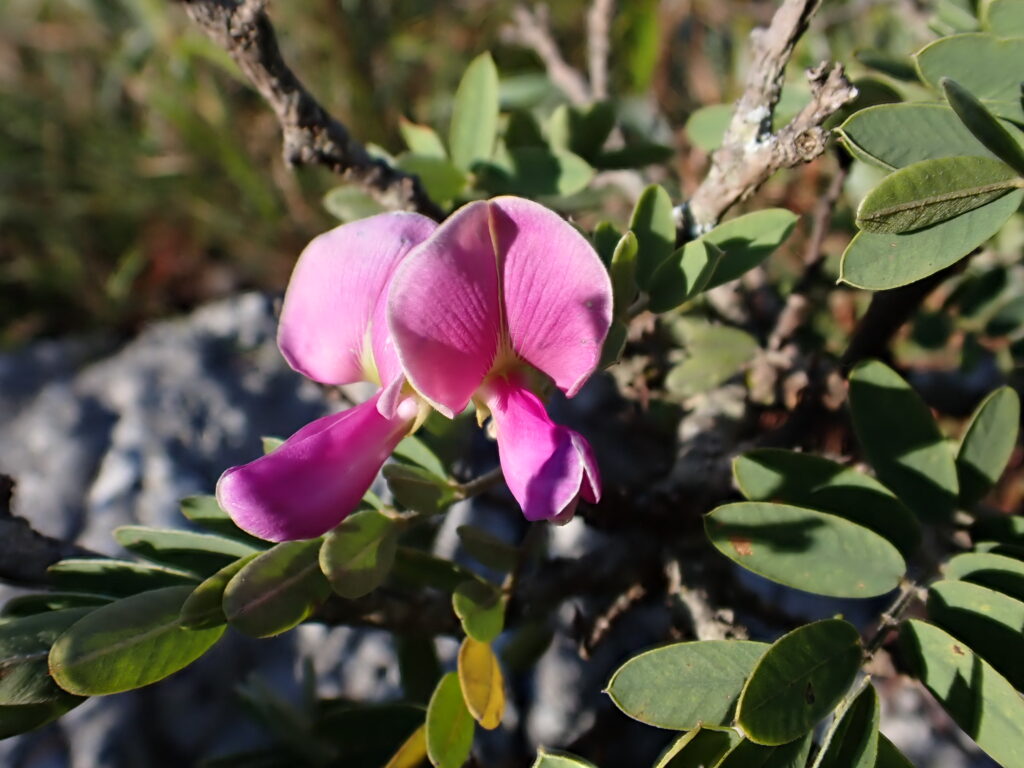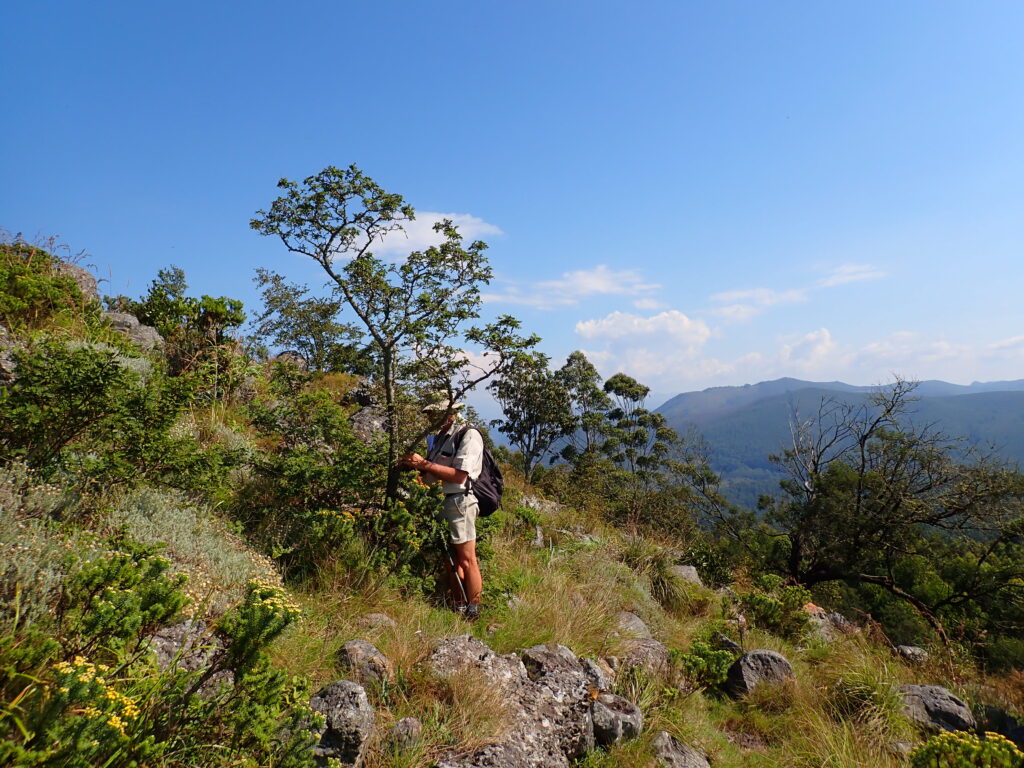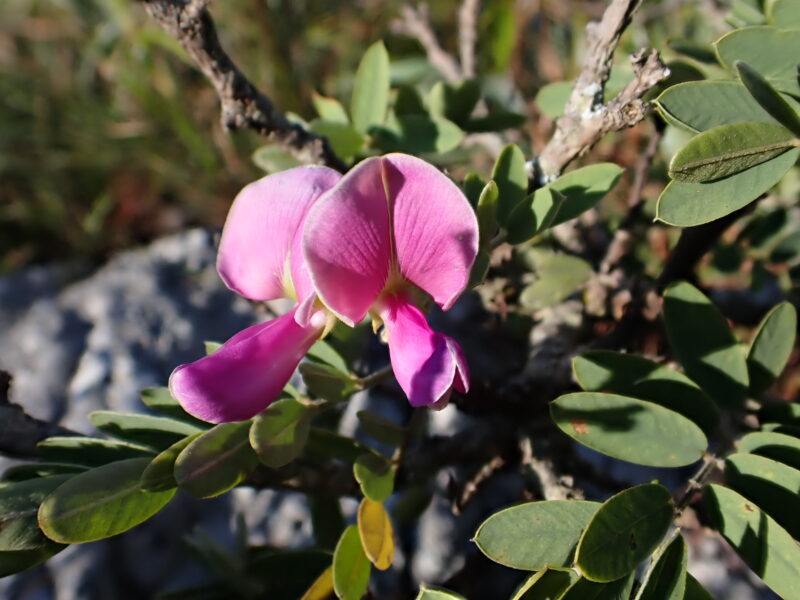
The flowers of the newly described tree, Tephrosia monticola
A new species of tree has been documented and described from the mountains east of Barberton near the South Africa – Eswatini border. Named Tephrosia monticola, it can present as a compact shrub, but trees up to 4m tall have also been found. It carries showy magenta flowers with grey-green leaves and has a rough, grey-brown bark.
It was first collected by Marć Stalmans in the Songimvelo Nature Reserve in February 1994. It was subsequently collected in Eswatini by Linda Loffler in 2001. On a Mpumalanga Plant Specialist Group (PSG) outing in 2005 it was again collected by John Burrows and Mervyn Lötter. All collections were made in the mountains near the South Africa-Eswatini border between Jeppes Reef and Forbes Reef.
Specimens of this mystery plant have existed in various herbaria for years as an undescribed species. It was during another PSG outing in 2022 to Ugutugulu Gorge that it caught the eye of Prof. Kevin Balkwill from Wits University’s School of Animal, Plant and Environmental Sciences.
“When I first saw this plant, it was growing on a rocky outcrop and there were just enough flowers to draw my attention. It was attractive and I knew I had not seen a shrubby Tephrosia exactly like that one before,” said Prof Balkwill.

Prof. Balkwill standing next to a small tree
His taxonomic research confirmed that this species was new to science. It was formally described by him and Delia Oosthuizen and botanical drawings were made by Lesley Deysel. The description was published in the June 2023 issue of the journal Flowering Plants of Africa.
To work out what the plant is, it had to be compared to other Tephrosia species. It is most similar to Tephrosia chimanimaniana which is confined to the Chimanimani Mountains in eastern Zimbabwe and western Mozambique. They share the woody, shrubby or tree-like habit, triangular leaflike appendages at the base of the leafstalk. The leaflets are held in a ‘louvre window’ pattern and are covered with silky hairs below and the flowers are large and attractive. Tephrosia monticola differs from T. chimanimaniana by the length of the sharp tips on the leaflets, bract shape and width, length of calyx lobes and length of hairs on the calyx lobes. The new species was also compared to T. monticola, T. praecana, T. aequilata subsp. australis,T. shiluwanensis and T. pondoensis.
The generic name Tephrosia refers to the ashy colour of the leaves and the epithet, monticola, means living in the mountains. It is a member of the Legume family also known as the Fabaceae family in which crops such as peas, rooibos tea and lucerne fall. The new species does not have a common name, but some Tephrosias are known as Pink Bush Tea, Pioneer Tephrosia, Fish poison and Wild indigo.
Most species of Tephrosia are shrubs or herbs, but species that reach three or more meters tall qualify as trees. T. monticola brings the total number of trees in this genus in Africa to seven and the number in southern Africa to four.
T. monticola is found in open woodland or lightly wooded grassland among rocks on steep rocky slopes or on cliff edges. Due to the specific habitat and environment in which this plant grows, it is estimated that there are possibly less than 2500 individuals in a distribution area of 100 km². Some of the suitable area has been planted with Eucalyptus trees and may have caused a historical reduction of 20 percent of the population. Eucalyptus and Black wattles are also escaping into the undisturbed areas in which these plants grow and represent a potential threat. However, three of the six known localities where this plant has been found are in proclaimed nature reserves. Thus the authors suggested a provisional threat status of Least Concern.

